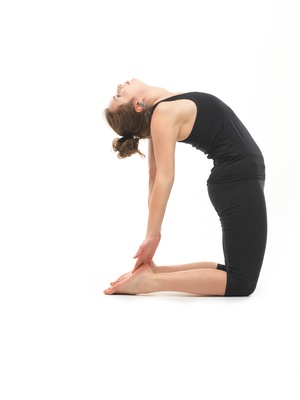- You are here:
- Home »
- Blog »
- Fitness After 40 »
- Why Some Exercises Are Riskier Than Others
Why Some Exercises Are Riskier Than Others
I had come to a stop in traffic. I turned my head to the left and there, in a street front shop with large glass windows, was a fitness center.
What I saw through the window was a man, maybe 60ish in years, on his back on the floor with a medicine ball in his hands. At his feet was either a trainer or a buddy – dressed in black gym shorts and a black exercise shirt – appearing much younger than him.
The man did a partial sit up and threw the ball to the younger man. He held the sit up position as the younger man caught the ball and threw the ball back to the older man who caught it, and then lowered himself to the floor. And they repeated this at least 10 times while I was sitting in traffic.
What’s happening here is this:
sit up motion load + load of ball + load of throwing ball + load of holding situp position + load of catching the ball + load of lowering to the floor = a huge load on your spine.
This drill will exhaust your abdominal muscles, which is why it’s often used, but the price for that success is the fatigue it creates in the supporting tissues of the spine.
The fatigue comes from tapping something referred to as your “physiologic reserve” – the amount of energy and capacity your body has to do things and still have something left over.
The greater the demand of the exercise, the greater the demand for energy and that means dipping into your physiologic reserve to meet the demand.
Injuries can happen when the demand exceeds the reserve by too much.
Some exercises tap more of your physiologic reserve than others and there are a number of factors that influence the demand. Here are a few to consider:
- Holding or applying a weight / load with one area of the body at it’s end range of motion while moving another part of the body. A good example of this is squatting with a barbell held over your head. The overhead position creates an end of range situation for your shoulders and thoracic spine. This increases the work of the tissues in these areas. Compare this with doing the same motion – a squat – while holding a dumb bell in each hand by your side. Much less work for the spine and shoulders and consequently much less risk of injury.

- Stretching a part of the body with resistance while it is at its end range of motion. An example is the “Camel” pose in yoga. This posture requires considerable flexibility in the hips and lower back. The weight of your trunk creates extra load or resistance. Some yoga instructors will advise you to use blocks to place your hands on which reduces the amount of motion and load in the spine.
- Applying a load or resistance to a body area or joint with the joint at it’s end range of motion. Using a seated knee extension machine is a good example of this principle. As you straighten your knee against the resistance, the load builds under your knee cap. Once you reach a fully straightened knee, the patellofemoral joint is at it’s end of range and is under very high loads.
- Using postures or movements that increase the force inside the body to unsafe levels. Sit ups, the Roman Chair exercises, shoulder dips, the Russian Twist, Superman, the Pistol squat are all examples of exercises that create high levels on internal joint stress.
Not all exercise is created equal. Some exercises carry more risk than others and the main reason is the demand on your physiologic reserve.
Choosing exercises that will challenge you but not bankrupt your physiologic reserve is key to staying healthy and fit as you age.
